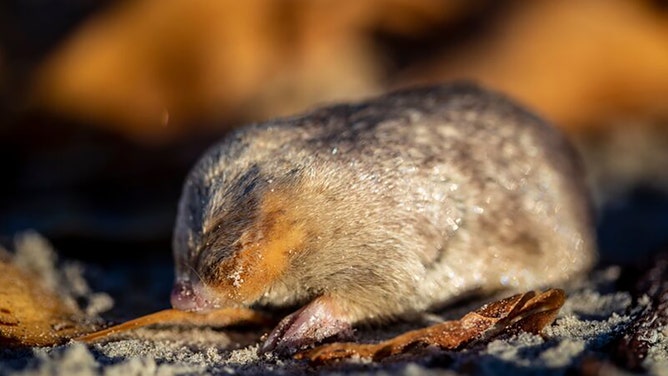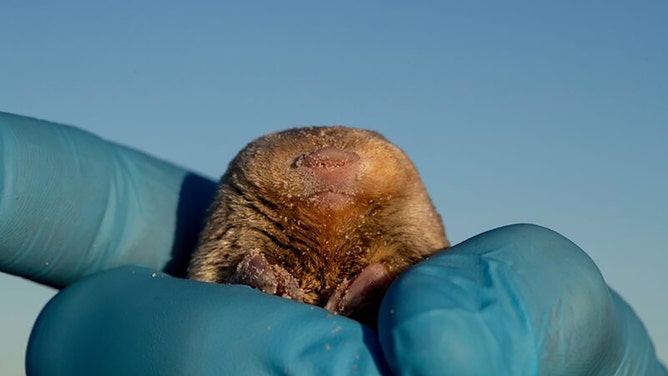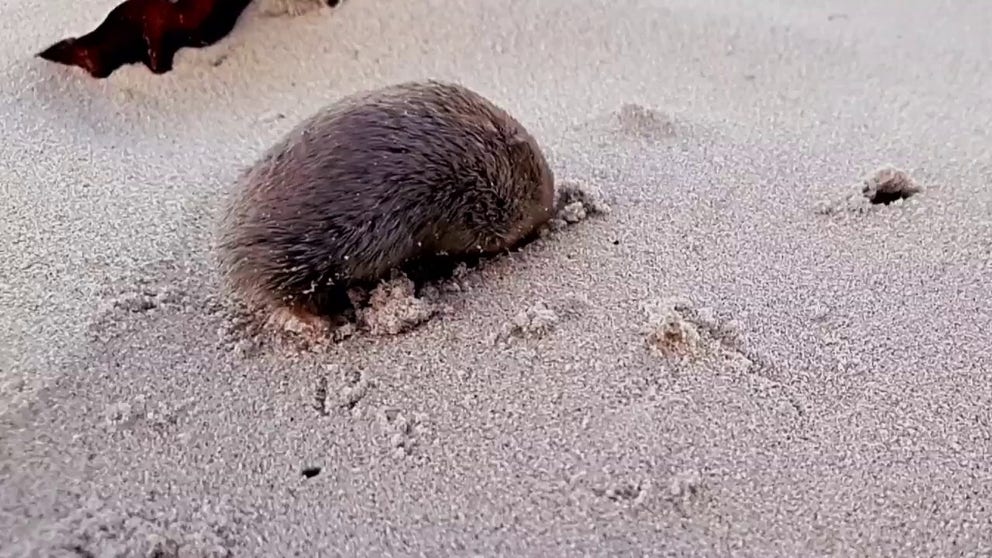Mole with super hearing thought to be extinct found on South African beach
Golden moles are skilled burrowers with sensitive hearing that allows them to detect vibrations from surface movements. Unlike other burrowing mammals, they do not leave visible tunnels behind while moving under the sand.
Watch: De Winton's golden mole burrows beneath South African sand
A De Winton's golden mole can be seen burrowing beneath the sand in South Africa.
PORT NOLLOTH, South Africa – Conservationists and geneticists in South Africa have rediscovered a blind mole species lost to science nearly 90 years ago.
The De Winton’s golden mole, known for its iridescent coat and sand-swimming ability, was last seen in 1936. Thought to be extinct, it was recently found by the Endangered Wildlife Trust (EWT) and the University of Pretoria.
WATCH: DEER STUCK ON FROZEN LAKE RESCUED BY FIREFIGHTERS WHO CRAWLED ACROSS ICY SURFACE

De Winton's golden mole is a blind mammal that lives underground and has acute hearing that detects vibrations from movement above the surface.
(Nicky Souness)
The South African mammal is the eleventh of the world’s most-wanted lost species to be rediscovered since Re:wild's Search for Lost Species was launched in 2017.
Scientists rediscovered the Afrotherian species using extreme measures, according to a paper published in Biodiversity and Conservation.
"It was a very exciting project with many challenges," said Esther Matthew, senior field officer with Endangered Wildlife Trust. "Luckily, we had a fantastic team full of enthusiasm and innovative ideas. Which is exactly what you need when you have to survey up to 18 kilometers (11.2 miles) of dune habitat in a day."
The EWT has been dedicated to finding De Winton's golden mole for more than two years. Their strategy involved interviewing locals from nearby communities and identifying probable areas in South Africa where the species could reside without detection.
Golden moles are skilled burrowers with sensitive hearing that allows them to detect vibrations from surface movements, according to the EWT. Unlike other burrowing mammals, they do not leave visible tunnels behind while moving under the sand.
In June 2021, a border collie with a unique ability to detect scents was instrumental in locating golden moles on the northwest coast of South Africa. The dog followed the trails left by the moles in the sand, leading the research team to collect more than 100 soil samples.
FLORIDA MARINE CENTER REPORTS BREAKING SEA TURTLE NESTING RECORD
The study confirmed the presence of De Winton's golden mole, a species exclusive to Port Nolloth's beach.
The team said they utilized a novel technique to detect golden moles involving environmental DNA (eDNA). Animals shed this type of DNA as they move through their environment, usually through skin cells, hair and bodily excretions.
WATCH: 'WORLD'S MOST DANGEROUS BIRD' EMERGES FROM OCEAN IN AUSTRALIA, STUNNING BEACHGOERS

The De Winton's golden mole is the eleventh of the world’s most wanted lost species to be rediscovered since Re:wild's Search for Lost Species was launched in 2017.
(Nicky Souness)
"Extracting DNA from soil is not without its challenges, but we have been honing our skills and refining our techniques – even before this project – and we were fairly confident that if De Winton’s golden mole was in the environment, we would be able to detect it by finding and sequencing its DNA," said Samantha Mynhardt, conservation geneticist with the Endangered Wildlife Trust and Stellenbosch University.
Since the expedition began, EWT has identified four additional populations of De Winton's golden mole.





